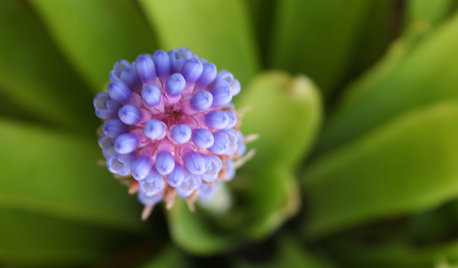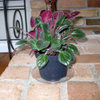Hi Everybody,
Here in Glendale, CA I've got a tree with quite a few epiphytic orchids, tillandsias, rhipsalis and ferns. I'm interested in trying out other epiphytic plants. Actually, a couple weeks ago I even attached a few cuttings of random Kalanchoes from my succulent collection.
Recently I've been looking into epiphytic Gesneriads and was wondering which ones would be most likely to handle drying out between waterings. I ran a drip system up my tree but most of the epiphytes are completely dry before I water again...although there are a couple small spots on the shady side where there's some live moss.
So far the few people I've talked to have mentioned Nematanthus, Codonanthe and Lysionotus as possible candidates. Many of the orchids I grow come from Brazil, Mexico, China, Australia...so I looked up some of the checklists I have on the vascular epiphytes of Brazil and here's what I've come up with...
Codonanthe devosiana 1,591 mm - 2,027 mm
Codonanthe gracilis 987 mm - 2,027 mm
Nematanthus crassifolius 1,886 mm
Nematanthus fritschii 2,027
Nematanthus gregarius 1,591 mm
Nematanthus striatus 1,591 mm
Nematanthus wettsteinii 1,591 mm - 2,000 mm
Sinningia douglasii 1,300 mm - 1,785 mm
By no means is this a comprehensive listing...I'm sure I only have a small percentage of completed checklists and there are quite a few checklists that need to be done. Also, I still haven't quite figured out how much variation in temperate/drought tolerance there is between different populations of the same species. Incidentally, if there's anybody else out there that collects checklists/articles on epiphytes...feel free to message me.
Annual rainfall only gives a partial picture on the moisture requirements of an epiphyte so I'd really appreciate hearing how well any of your Gesneriads handle drying out during summer.
While I'm at it...I don't have a single epiphytic Gesneriad...so if anybody has any extra plants or cuttings then I'd definitely be interested in purchasing some or trading for them. I've got quite a few extra Tillandsias, orchids, ferns, rhipsalis, etc. If anybody is in the area then you're more than welcome to come by for a tour!
Here is a link that might be useful: My Flickr








irina_co
epiphyte78Original Author
Related Professionals
Ashland Landscape Architects & Landscape Designers · Parole Landscape Architects & Landscape Designers · Buford Landscape Contractors · Addison Landscape Contractors · Ellicott City Landscape Contractors · Kerman Landscape Contractors · Mastic Beach Landscape Contractors · River Ridge Landscape Contractors · Salem Landscape Contractors · Santa Ana Landscape Contractors · Wilsonville Landscape Contractors · Goldenrod Landscape Contractors · Cypress Siding & Exteriors · Poway Siding & Exteriors · Warwick Siding & Exteriorsirina_co
epiphyte78Original Author
mark4321_gw
mark4321_gw
epiphyte78Original Author
mark4321_gw
epiphyte78Original Author
epiphyte78Original Author
irina_co
epiphyte78Original Author
irina_co
rredbbeard
epiphyte78Original Author
epiphyte78Original Author
irina_co
epiphyte78Original Author